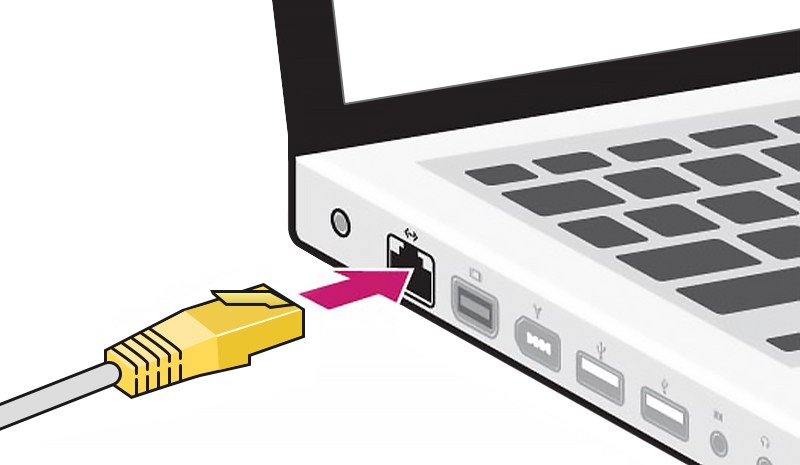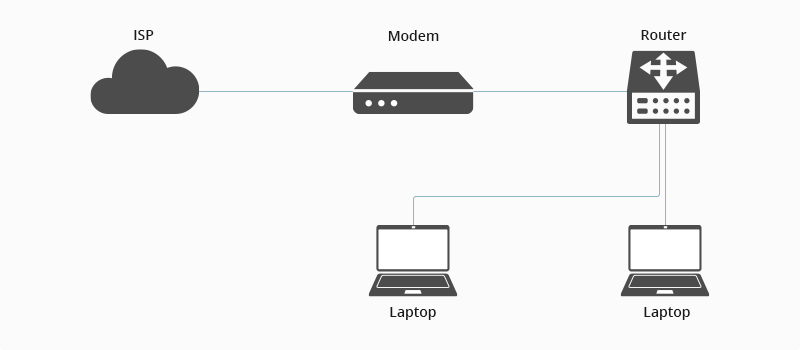How to Pull Ethernet Cable in a New House
Home Ethernet Wiring Guide: How to Get a Wired Home Network?

When moving to a new house, most people would likely to choose Wi-Fi to get the network as laying cable in the house is too complicated and makes the room messy. But the wired network is faster and more secure for internet access, file sharing, media streaming, online gaming and other things. So comparatively, the wired network is better than the wireless. Then how to wire Ethernet cable? Check the following paragraphs for your home Ethernet wiring.
Things to Know Before Home Ethernet Wiring
The basis of your wired home network will be Ethernet. This word has a very specific technical meaning, but in common use, it's simply the technology behind 99% of computer networks. Most computers now come already equipped with an Ethernet adapter – it's the squarish hole that accepts Ethernet cables.

For wiring Ethernet cable, the broadband connection usually being cable, DSL, or something else will first go through some kind of device typically called a modem. The modem's job is to convert the broadband signal to Ethernet. You'll connect that Ethernet from your broadband modem to a broadband router. Router, as its name implies, is used to "route" information between computers on your home network and between those computers and the broadband connection to the Internet. Each of your computers already has an Ethernet adapter. An Ethernet cable will run from each computer to the router and another cable will connect the router to the modem.

Home Ethernet Wiring Diagram
Which Network Ethernet Cable Should You Choose for the Your Home Ethernet Wiring?
From the passage above we know that the wired home network connection is based on Ethernet cable, next you'll have to decide what type of cable you want to use.
Cat5e, Cat6 or Cat7 Network Ethernet Cable
There are Cat5e, Cat6, Cat7 Ethernet cables, among which Cat6 cable is highly recommended for its faster speed and cheaper price when compared with Cat5e and Cat7 cables. Wiring your house will take a long time and it's always better to do it right the first time. It is suggested to calculate the cable length before purchasing in case of material waste and always keep in mind to make the cable extra longer than which you actually need.
UTP or STP Ethernet Cable
If you have made your decision on the cable, then you will have to consider which type of cable you need-UTP or STP? UTP stands for unshielded twisted pair while STP stands for shielded twisted pair. Shielded is much more expensive because it adds a layer of protection on the outside of the cables. For home use, the unshielded is completely fine.
Stranded or Solid Ethernet Cable
Next, there is the option of stranded or solid core wire. This basically means that the inside of your wire is made up either braided strands or one solid piece. What this comes down to is how much manuevering you will need to do with the wire. If you're going to be fishing it through tight spaces, a solid piece of wire is much easier to move around in a tight space because it is rigid. The drawback to the solid core is that it is harder to connect to the wall outlet or plastic jack. Stranded wire is easier to connect to a wall outlet, but it's pretty flimsy if you're trying to push it through crevices.
Home Ethernet Wiring Guide: How to Get a Wired Home Network?
Now that you've made a decision about the Ethernet cable types you will use, then you need to know how to wire them. Usually, this job includes installing the wall plates, running the cable, and connecting the cables to jacks. Before the installation, remember to check that you have all the necessary equipment to do the job, that way you wouldn't have to stop in the middle of the process because something is missing. Basic tools are listed in the table below for your reference.
| Cable Assemblies | Network Tools & Testers |
|---|---|
| Inline Couplers | Keystone Wall Plates |
| Keystone Jacks | Cable Crimping Tools |
| Connectors/Plugs | Cable Strippers |
| Boot Covers | Punch Down Tool |
Wall Plates Installation
Look at your sketch and find where to install the wall plates. First, line up and measure the size of the wall plate. Then draw the outlines on the wall to prepare for cutting the hole which is the most difficult during this process. And use a stud finder prior to make sure that you don't hit a stud. Next step is to cut the hole. In this step, just leave the wall plates off.

Network Cable Installation
Before running your cable, make a measurement to see the cable length for each run. You can measure from floor plans, run one, etc. If you run one cable to each room from the distribution room, gently pull it out and make other cable run like it. Then clear the path in the walls and drill holes. Once you have drilled the holes you can string out the cable and ensure no extra cable is tucked in the wall. After that, you can label cables on both ends and measure the exact cable length. Remember to leave spare cables for stripping and crimping.
Connect the Cable to Jacks
Now you need to wire the cables. Strip about one inch of the outer jacket off the cable and push the wires into the keystone jack to match the color code marked on it (T568A or T568B standards). Punch down the cables to keystone jacks (or patch panel) with a punch down tool. After you have all the cables connected, you can click the jacks into the wall plates. At last, fix the wall plate on the wall with supplied screws. You can refer to the video below for more details.
Test Your Wired Home Network
Once all cables are wired, test the network with network cable tester. If LEDs on the tester light up, it means the Ethernet plug is connected correctly. On the contrary, Ethernet plug is not connected right and you should check the Ethernet plug. After everything is prepared well, you can connect the network.
Summary
Building a home network is very easy. This article talks about detailed steps of home Ethernet wiring. FS provides cat5e, cat6 and cat6a Ethernet cables with many color and length options. Snagless boot design prevents unwanted cable snags during installation and provides extra strain relief. Besides, custom service is also available. For more details, welcome to visit www.fs.com or contact us over sales@fs.com.
Related Articles:
How to Get 10Gbps Home Network for Less Than $60? | FS Community
Quick View: Cat5 vs Cat5e vs Cat6 Ethernet Cables | FS Community
- Home Network
- Cat6 Cable
- Ethernet Cable
- Installation Guide
How to Pull Ethernet Cable in a New House
Source: https://community.fs.com/blog/how-to-get-a-wired-home-network-with-ethernet-cable.html